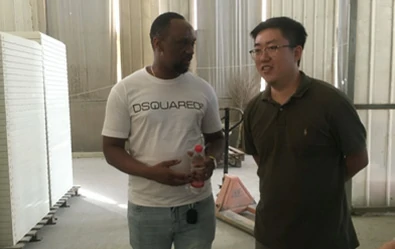loading...
- No. 9, Xingyuan South Street, Dongwaihuan Road, Zaoqiang County, Hengshui, Hebei, China
- admin@zjcomposites.com
- +86 15097380338
- Welcome to visit our website!
frp pressure vessel
Understanding FRP Pressure Vessels A Comprehensive Overview
Fiber Reinforced Plastic (FRP) pressure vessels have emerged as vital components in various industrial applications, thanks to their unique properties and advantages over traditional materials. These innovative structures are designed to withstand high pressures and corrosive environments, making them ideal for use in sectors such as chemical processing, oil and gas, and water treatment. This article explores the fundamentals, advantages, manufacturing processes, and applications of FRP pressure vessels.
What are FRP Pressure Vessels?
FRP pressure vessels are composite materials made primarily of a polymer matrix reinforced with fibers, usually glass or carbon. The combination of these materials results in a lightweight yet robust structure capable of withstanding internal pressure and external stress. The polymer matrix provides resistance to corrosion and chemical attack, while the fibers enhance mechanical strength and durability.
Advantages of FRP Pressure Vessels
1. Corrosion Resistance One of the most significant benefits of FRP pressure vessels is their inherent resistance to a wide range of chemicals. Unlike metal vessels, which may corrode and degrade over time due to chemical exposure, FRP vessels can offer a longer service life with minimal maintenance.
2. Lightweight FRP vessels are considerably lighter than their metallic counterparts. This reduction in weight not only simplifies transportation and installation but also allows for easier handling during operations.
3. Design Flexibility The manufacturing process of FRP vessels allows for greater design flexibility. They can be molded into various shapes and sizes tailored to specific applications, making them suitable for diverse industrial requirements.
4. Thermal Properties FRP materials have excellent thermal insulation properties. This characteristic makes them suitable for applications where temperature control is crucial, protecting internal contents from extreme temperature variations.
5. Long Service Life Due to their resistance to corrosion, chemicals, and environmental factors, FRP pressure vessels often have a longer service life than traditional metallic vessels. This longevity leads to lower replacement costs and enhanced reliability in operations.
Manufacturing Processes
frp pressure vessel

The production of FRP pressure vessels involves several key steps that ensure the final product meets industry standards and specifications
1. Material Selection The choice of resins and reinforcing fibers is critical. Common resin types include epoxy, polyester, and vinyl ester, each selected based on the specific requirements of the application. Glass fibers are widely used for general applications, while carbon fibers provide superior mechanical properties.
2. Molding Techniques Various techniques can be employed to shape FRP vessels, such as filament winding, resin transfer molding (RTM), and hand lay-up processes. Filament winding is particularly popular for pressure vessels due to its ability to create high-strength structures with uniform thickness.
3. Curing After the vessel is formed, the resin is cured, either at room temperature or using heat, which solidifies the composite and imparts strength. The curing process is crucial for achieving the desired mechanical properties and ensuring the vessel can withstand high pressures.
4. Testing and Certification Before FRP pressure vessels can be deployed, they undergo rigorous testing to verify their integrity and compliance with industry standards. This testing includes hydrostatic tests to assess their performance under pressure and other evaluations to ensure safety and reliability.
Applications of FRP Pressure Vessels
FRP pressure vessels are utilized in a wide array of industries due to their favorable properties
- Chemical Industry They are widely used for storing and transporting corrosive chemicals, including acids and caustics. - Wastewater Treatment FRP vessels are employed in various wastewater treatment processes, thanks to their resistance to chemical exposure and ability to withstand high pressure. - Oil and Gas In the oil and gas sector, FRP vessels are used for storage and transportation of hydrocarbons, offering lightweight solutions with excellent durability. - Food and Beverage Certain FRP vessels are designed to meet food safety standards, allowing for the safe storage of liquids and gases in the food industry.
Conclusion
FRP pressure vessels represent a significant advancement in materials engineering, providing an effective solution for various industrial applications. Their unique blend of lightweight construction, corrosion resistance, and design flexibility sets them apart from traditional metal vessels. As industries continue to evolve and demand more efficient and reliable solutions, FRP pressure vessels will undoubtedly play an essential role in shaping the future of engineering and infrastructure.
-
Why Choose a Galvanized Water Tank for Your Storage NeedsNewsMay.21,2025
-
The Strength and Durability of FRP GratingNewsMay.21,2025
-
The Importance of Water Treatment Systems for Clean and Safe WaterNewsMay.21,2025
-
The Advantages of FRP Rebar for Construction ProjectsNewsMay.21,2025
-
Say Goodbye to Hard Water with a Reliable Water SoftenerNewsMay.21,2025
-
Maximize Your Water Storage with a Sectional Water TankNewsMay.21,2025
-
The Power of Filter VesselsNewsMay.19,2025
